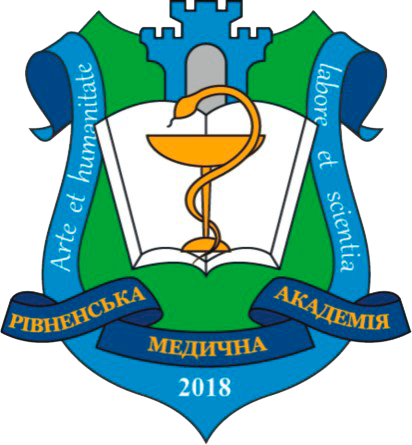ТHE VALIDATION CHARACTERISTICS STUDY OF THE TECHNIQUE OF DETERMINING IMPURITIES OF URSODEOXYCHOLIC ACID IN SOLID FORMS BY THE THIN-LAYER CHROMATOGRAPHY METHOD
DOI:
https://doi.org/10.32782/health-2024.4.8Keywords:
ursodeoxycholic acid, hard gelatin capsules, analytical technique, thin-layer chromatography, validation characteristics.Abstract
Ursodeoxycholic acid (UDCA) is one of the native bile acids, which is synthesized in the process of normal bile acid metabolism in the human body and is widely used in the form of solid dosage forms as a first-line therapeutic agent for various cholestatic diseases and hepatobiliary pathologies of the liver and the treatment of cholesterol gallstones. During the synthesis, impurities such as related bile acids, namely chenodeoxycholic acid (impurity A), cholic acid (impurity B) and lithocholic acid (impurity C), which are used as starting material, as well as other organic compounds, such as aldehydes and ketones, may enter the UDCA substance. We have developed an analytical technique for determining UDCA impurities in hard gelatin capsules by thin-layer chromatography, which is characterized by expressiveness and relatively low cost of routine control compared to liquid chromatography. The formed spots of identified impurities were evaluated in comparison with the spots of standard solutions. The analysis results were considered reliable if two spots were observed in the chromatogram of the reference solution (g). The validation characteristics of specificity, robustness, suitability of the chromatographic system, and detection limit were evaluated. Robustness was investigated using an unsaturated chamber and it was proven that the method is resistant to changes in the degree of saturation of the chambers. The suitability of the chromatographic system was tested on plates of the same manufacturer with aluminum and glass substrate types. It was established that the type of sorbent substrate does not affect the suitability of the chromatographic system. The maximum permissible values of the detection limits for UDCA and its impurities were calculated and it was proven that the spots of impurities at the detection limit level are clearly observed.
References
Bessone F., Roma M.G. Is ursodeoxycholic acid detrimental in obstructive cholestasis? A propos of a case of malignant biliary obstruction. Annals of Hepatology. 2016;15 (3): 442–447. https://doi.org:10.5604/16652681.1198824.
Promising new fixed combination for the treatment of diseases of the hepatobiliar system: Substantiation of pharmacotherapeutic properties and pharmaceutical quality profile. L.B. Bondarenko et al. Regulatory Mechanisms in Biosystems. 2018. Vol. 9, Issue 1. P. 23–40. https://doi.org/10.15421/021804.
Tonin F., Arends I.W.C.E. Latest development in the synthesis of ursodeoxycholic acid (UDCA): a critical review. Beilstein J. Org. Chem., 14 (2018), pp. 470–483. https://doi.org/10.3762/bjoc.14.33.
Салій О. О., Нікітіна О. А., Ковалевська О. І., Ляшенко В. О. Дослідження валідаційних характеристик методики кількісного визначення урсодеоксихолевої кислоти у твердих желатинових капсулах при оцінці однорідності дозованих одиниць. Фармацевтичний часопис. 2024. № 2. С. 22–33. https://doi.org/10.11603/2312-0967.2024.2.14405.
Farina G.A. et al. Adverse effects of deoxycholic acid in submandibular glands, submental, inguinal and subplantar regions: a study in rats. Clinical Oral Investigations, 2022. Vol. 26. №. 3. P. 2575–2585. https://doi.org/10.1007/s00784-021-04227-6.
Roda A. et al. HPLC study of the impurities present in different ursodeoxycholic acid preparations: comparative evaluation of four detectors. Journal of pharmaceutical and biomedical analysis, 1993, 11.8: 751–760.
Peepliwal A., Bonde C.G., Bothara K.G.. A validated RP-HPLC method for quantitative determination of related impurities of ursodeoxycholic acid (API) by refractive index detection. Journal of Pharmaceutical and Biomedical Analysis, 2011. Vol. 54, Issue 4. P. 845–849. https://doi.org/10.1016/j.jpba.2010.10.001.
Boscolo О., Flor S., Dobrecky C., Martinefski M., Tripodi V., Lucangioli S. LC-MS/MS Method Applied to the Detection and Quantification of Ursodeoxycholic Acid Related Substances in Raw Material and Pharmaceutical Formulation (2018). Journal of Pharmacy and Pharmacology, 6 (2018), 448–455. Available at SSRN: https://ssrn.com/abstract=3873576.
Huang Y. et al. Development of HPLC-CAD method for simultaneous quantification of nine related substances in ursodeoxycholic acid and identification of two unknown impurities by HPLC-Q-TOF-MS. Journal of pharmaceutical and biomedical analysis, 2023, 229: 115357. https://doi.org/10.1016/j.jpba.2023.115357.
Ursodeoxycholic acid (1275). European Pharmacopoeia. 10th Edition. – European Directorate for the Quality of Medicines (EDQM). Council of Europe, F-67075 Strasbourg Cedex, France, 2019. P. 4152.
Repina N. et al. Thin-layer chromatographic separation of a number of bile acids with mobile phases based on surfactants. JPC – Journal of Planar Chromatography – Modern TLC, 2020, 33.3: 271–279. https://doi.org/10.1007/s00764-020-00034-z.
ICH Q2 (R1): Validation of Analytical Procedures: Text and Methodology [Електроний ресурс]. Режим доступу: https://database.ich.org/sites/default/files/Q2%28R1%29%20%20Guideline.pdf.
Analytical Procedures and Methods Validation for Drugs and Biologics: Guidancefor Industry. FDA CDER etc. U.S. Department of Health and Human Services, 2015, 18 p. [Електроний ресурс]. Режим доступу: https://www.fda.gov/media/87801/download.
Валідація аналітичних методик і випробувань. Державна фармакопея України. 2-ге вид. Харків: Державне підприємство «Український науковий фармакопейний центр якості лікарських засобів», 2015. Т. 1. С. 910–929.
Статистичний аналіз результатів хімічного експерименту. Державна фармакопея України. 2-ге вид. Харків : Державне підприємство «Науково-експертний фармакопейний центр», 2015. Т. 1. С. 881–909.





